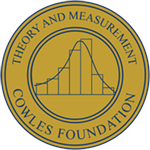Document Type
Discussion Paper
Publication Date
10-1-2005
CFDP Number
1536
CFDP Revision Date
2007-03-01
CFDP Pages
46
Abstract
Age effects in baseball are estimated in this paper using a nonlinear fixed-effects regression. The sample consists of all players who have played 10 or more “full-time” ’ years in the major leagues between 1921 and 2004. Quadratic improvement is assumed up to a peak-performance age, which is estimated, and then quadratic decline after that, where the two quadratics need not be the same. Each player has his own constant term. The results show that aging effects are larger for pitchers than for batters and larger for baseball than for track and field, running, and swimming events and for chess. There is some evidence that decline rates in baseball have decreased slightly in the more recent period, but they are still generally larger than those for the other events. There are 18 batters out of the sample of 441 whose performances in the second half of their careers noticeably exceed what the model predicts they should have been. All but 3 of these players played from 1990 on. The estimates from the fixed-effects regressions can also be used to rank players. This ranking differs from the ranking using lifetime averages because it adjusts for the different ages at which players played. It is in effect an age-adjusted ranking.
Recommended Citation
Fair, Ray C., "Estimated Age Effects in Baseball" (2005). Cowles Foundation Discussion Papers. 1823.
https://elischolar.library.yale.edu/cowles-discussion-paper-series/1823


